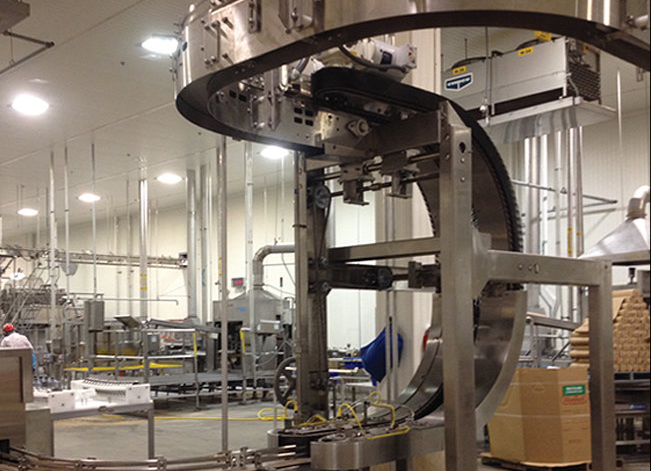
Uses of Compressed Air to Convey Products : In a manufacturing environment, compressed air systems used to transport various types materials. Things that are moved in the same pipe as the air moving the items are referred to as internal air conveyors. In the packing industry, this sort of conveyor is employed. Internal air conveyors are restricted to lengths of roughly 100 feet because the pressure in the pipe decreases with distance (30 meters). Pneumatic conveyors are another name for these conveyor systems.
Pneumatic conveyors, in general, move goods more quickly than other forms of conveyors. They’re also great for moving scrap where traditional conveyors would soon clog or get contaminated. To avoid clogging, the interior diameter should be nearly double the diameter of the item or material being pushed. Air conveyors are also effective for conveying products that are sharp or abrasive. Because lengthy ribbons of razor-sharp metal can easily snag other types of conveying equipment, metal waste, and recycling centers are ideal locations for air-operated conveyors.
Air conveyors are most typically used to move lightweight goods such as empty containers, cartons, and trays at rates of up to 1,000 feet per minute, but they are not restricted to that. Various air-operated conveyor systems are designed to transport a variety of products and perform a variety of jobs.
Other frequent uses include hopper loading (resin in the plastics sector, bottle caps in bottling, etc. ), transporting parts from one area to another, tensioning fiber in filling operations, and, in some cases, vent gas. The vacuum action transports the gaseous constituents, which are sometimes released into the atmosphere. Because there is no power involved and they may be supplied with inappropriate materials, air conveyors are also well suited for handling corrosive or high temperature gas. This means the unit can be tailored to meet specific safety requirements and is essentially maintenance-free.
Filling Machines And Their Working Principles
How does it work?
Ring Vac and XSPC are air-operated conveyor devices that exploit the Venturi effect. The effect is a variation of Bernoulli’s principle that allows it to enhance the flow speed to maximize conveying efficiency. To discover more about the Venturi Effect, see this article.
The air-operated conveyor draws in and moves the gas by blowing compressed air in one direction via a series of perforations. The number of holes in the system is determined by the unit’s size, which draws air behind it to create a vacuum, which draws in any gasses and then pushes them out. It’s a great way to move gas across longer distances because of the greater vacuum.
Air conveyors are sometimes used for venting in addition to conveying articles and materials. Typically, an air amplifier is used for venting, but the pneumatic conveyor has some advantages, particularly if the gas is contaminated or if the vented materials could potentially deposit materials on the amplifier’s Coandă angles.
All You Need to Know About Liquid Filling Machines
These deposits could eventually prevent the amplifier from venting. Because compressed air enters through a different vent on air-operated conveyors, there is less chance of dirt deposits forming if the gas is contaminated. The air-operated conveyor creates a higher vacuum than an air amplifier, but it does not transport as much air volume. The Venturi system is a low-cost and easy-to-manufactured equipment. It operates with reduced air pressure and is made of aluminum, stainless steel (standard), Teflon (special units), and various polymers and metals.
The Ring Vac Venturi system, unlike an airflow amplifier, moves less volume but creates a higher vacuum. As a result, because it is built at a lower cost and runs at a lower air pressure, this system is suitable for venting gas. Keep in mind that the length of vertical and horizontal distances transferred is highly dependent on the sort of cargo being transported.
Benefits of airborne transporter systems
The compact size, rapid response time, and portability of these devices are all significant advantages. They’re also designed to transfer or vent a wide range of lightweight products, raw materials, or odors from one location to another in a clean, rapid, and effective manner. Because air conveyors have few moving parts and no pockets to gather trash or water, they are safe and simple to clean and maintain. A pressure regulator can simply manage its flow rate.
Overall, air-operated conveyor systems are designed to be simple to run, lightweight, low-maintenance, and electricity-free. Both continuous and intermittent use is possible with these systems. They’re built to efficiently employ compressed air over long distances and across the entire length of the vehicle. The use of Nex Flow air-operated conveyor systems has various advantages (either the Ric Vac or the XSPC conveyors).
